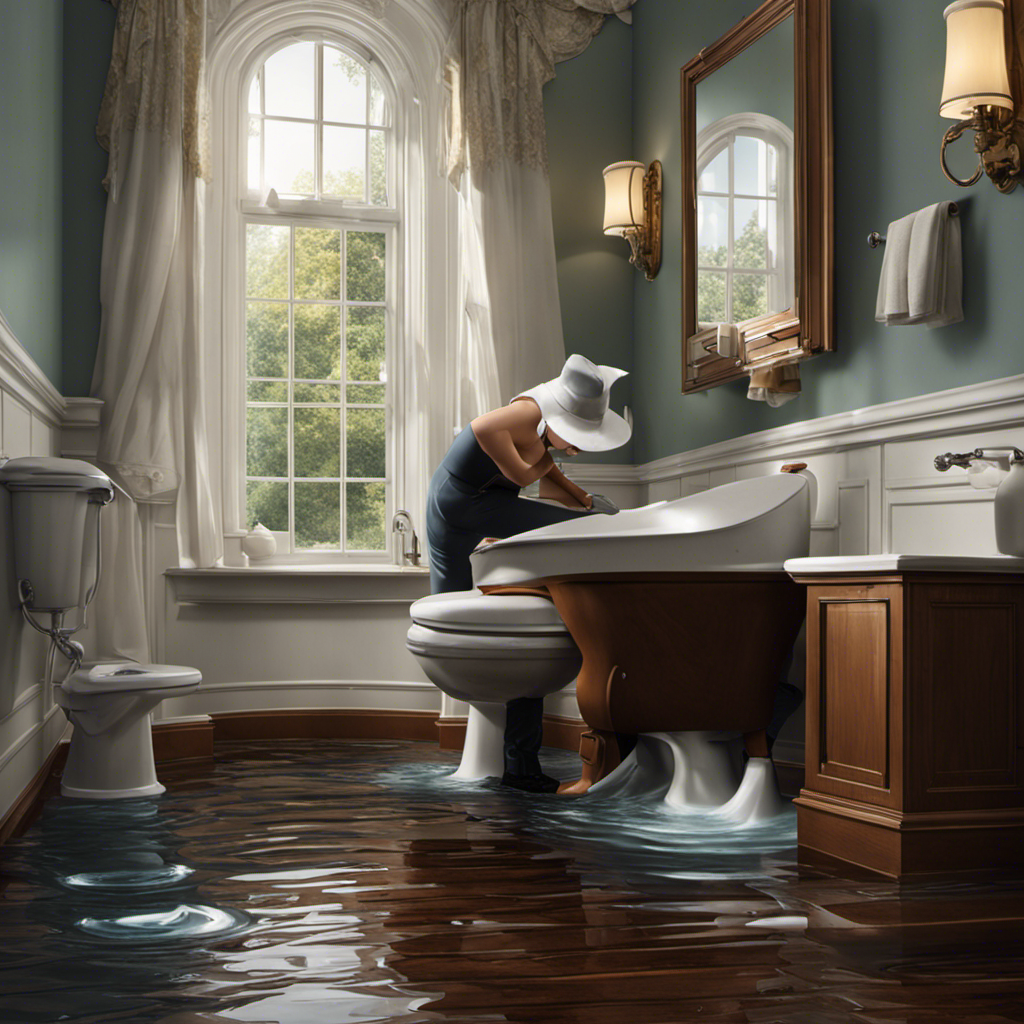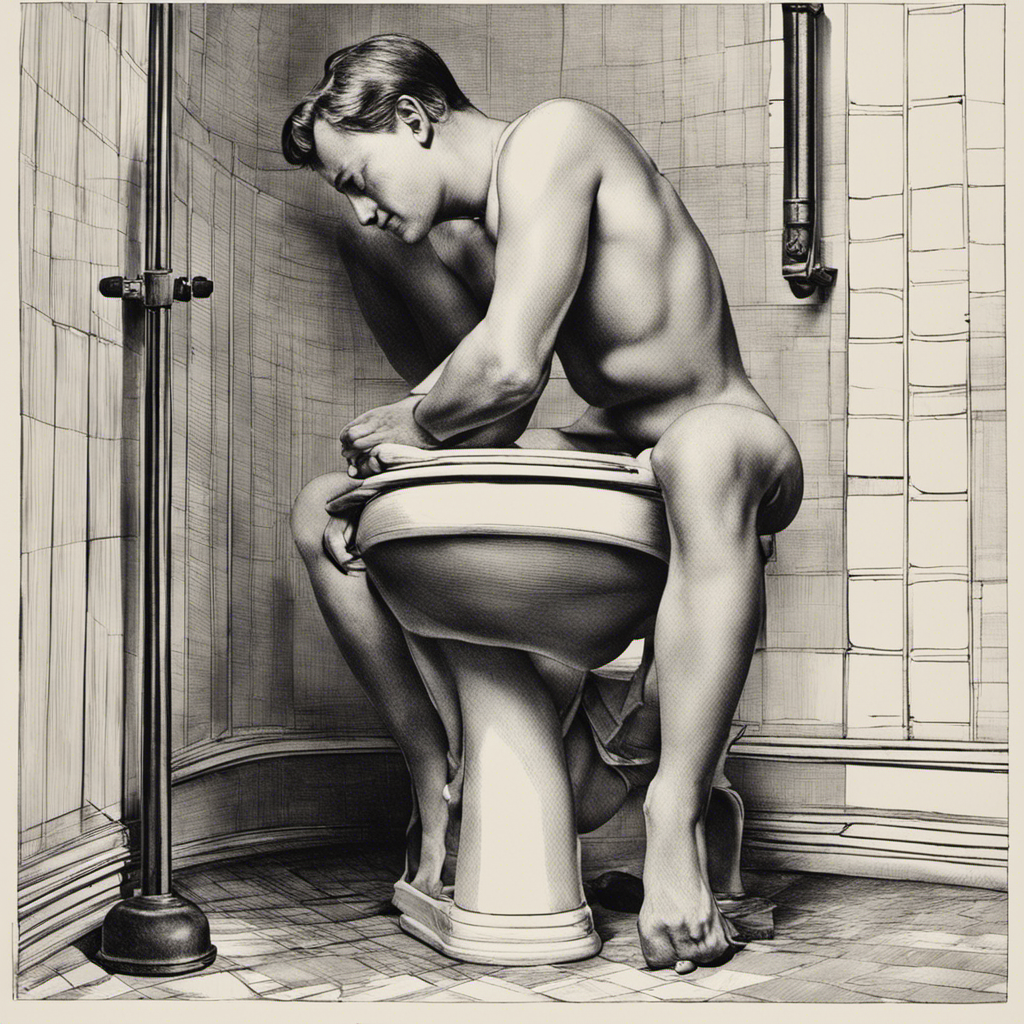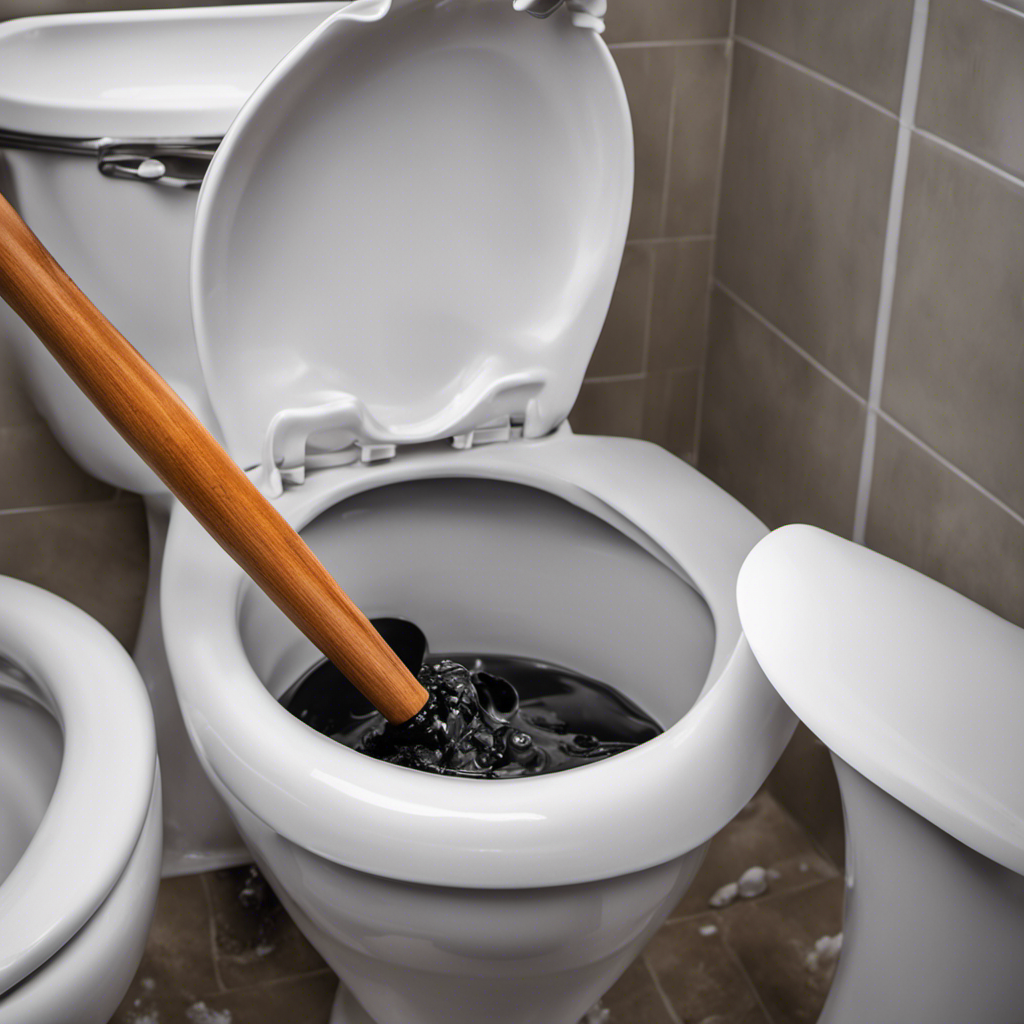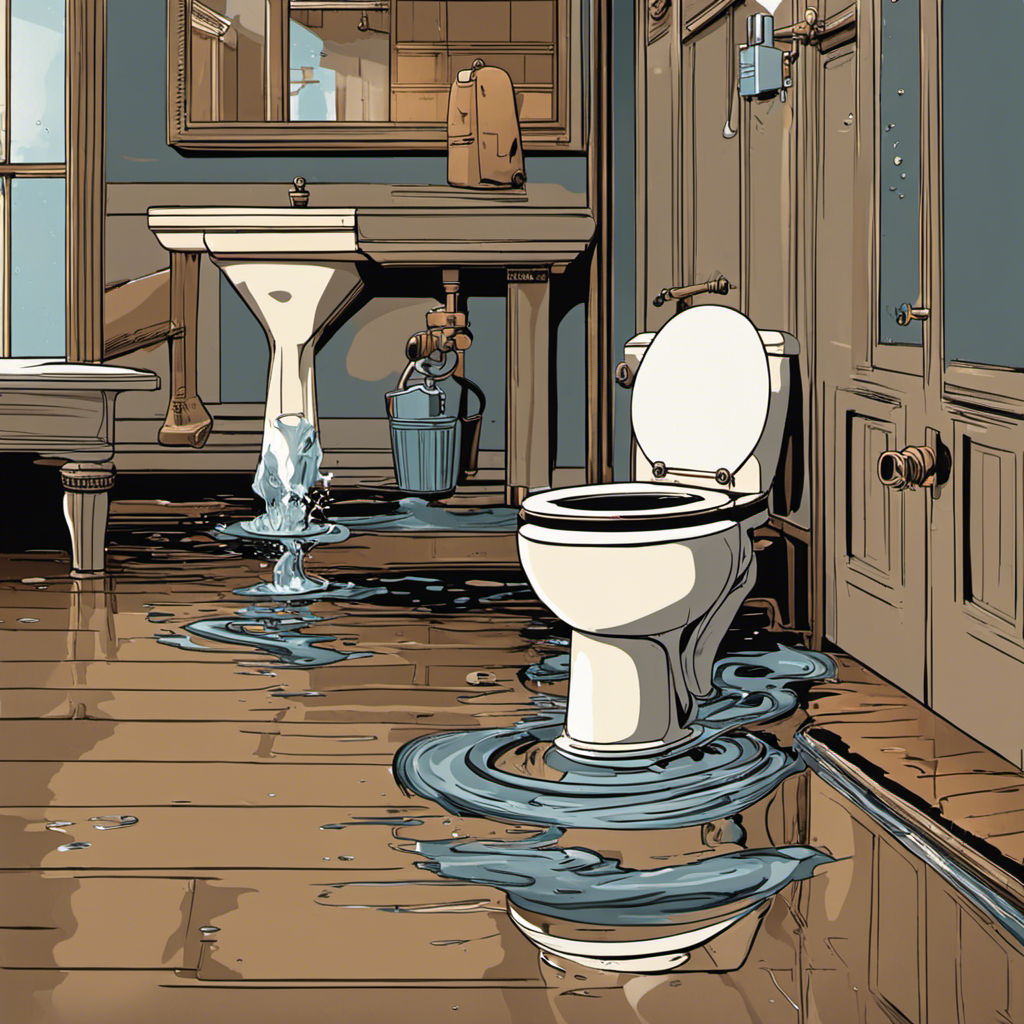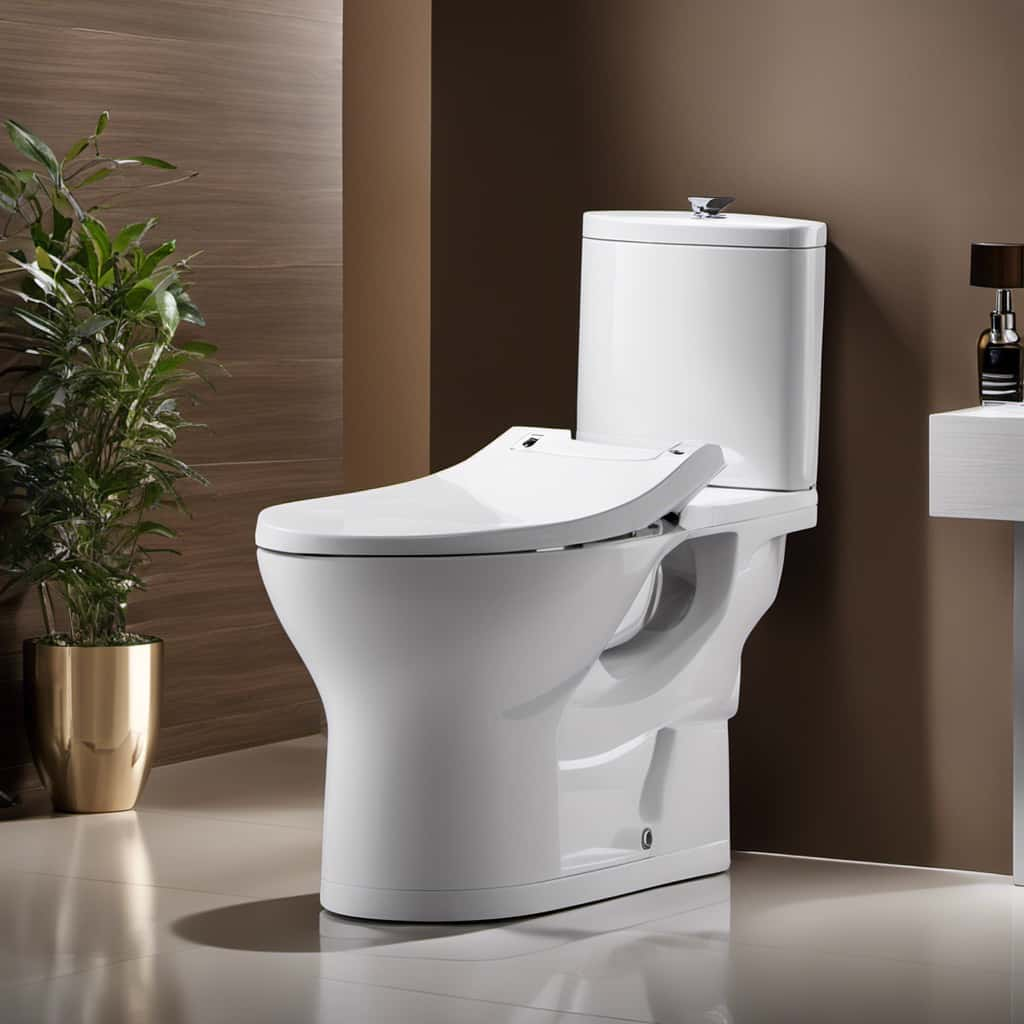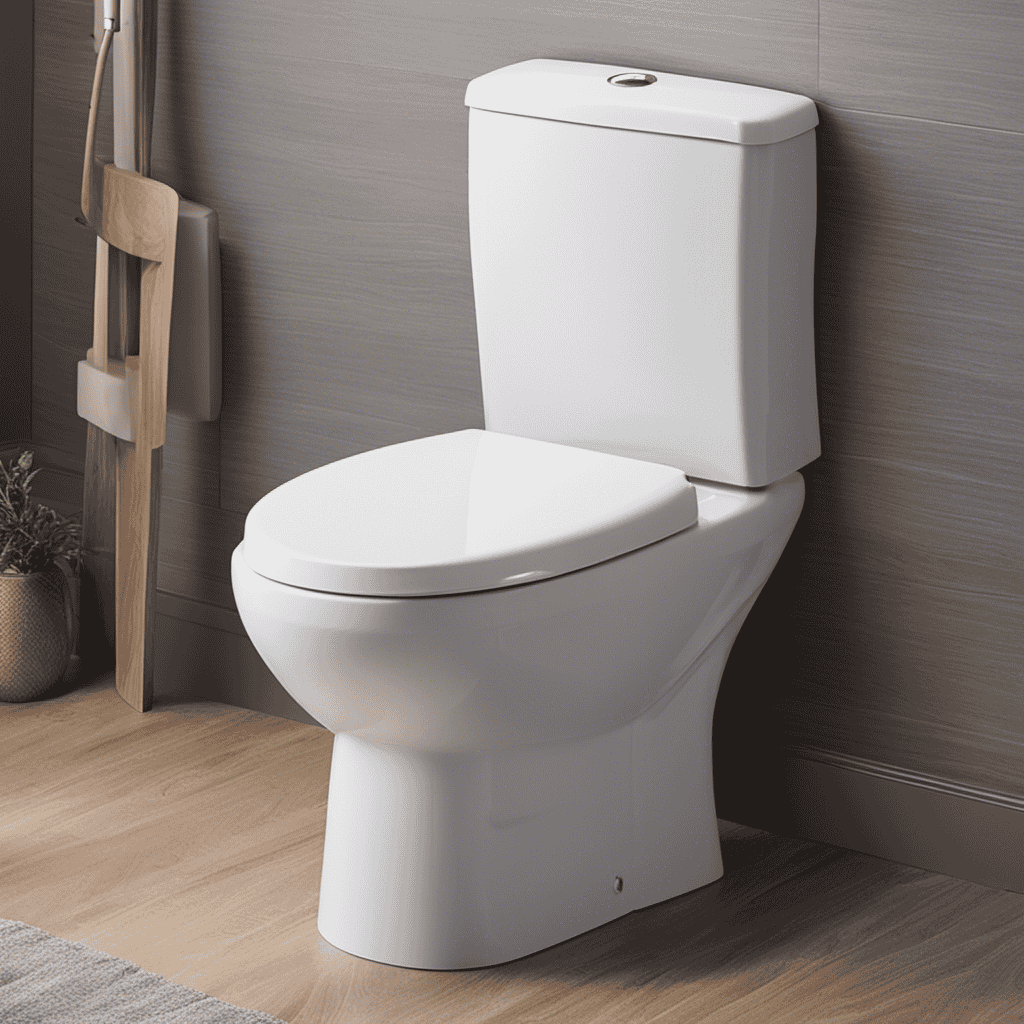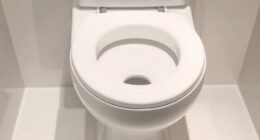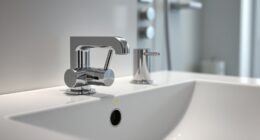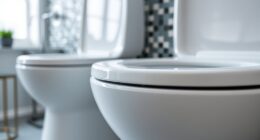As someone who has experienced the dreaded overflowing toilet, I know firsthand how frustrating and messy it can be.
But fear not! In this article, I will guide you through the steps to stop your toilet from overflowing, like a pro.
From understanding the common causes to using the essential tools, I’ll provide you with practical solutions to clear a clog and prevent future mishaps.
So, let’s dive in and tackle this plumbing predicament head-on!
Key Takeaways
- Regular maintenance and preventive measures are essential for preventing toilet overflow and water damage.
- Flushing non-flushable items can cause clogs and blockages in the plumbing system.
- Proper flushing techniques, such as using the right amount of toilet paper and avoiding excessive force, are important for preventing overflow.
- Knowing when to call a plumber is crucial, especially if the water continues to overflow or there are visible cracks or leaks in the toilet.
Understanding the Common Causes
Understanding the common causes of a toilet overflowing can help prevent future incidents.
When a toilet overflows, it can be a messy and unpleasant experience. However, there are common signs that can indicate a potential overflow.
If you notice the water level rising higher than normal after each flush or hear a gurgling sound when you flush, these could be signs of a clogged drain or a faulty flushing mechanism.
Ignoring these signs can lead to potential damages such as water damage to your bathroom floor, walls, or even the ceiling below. It is important to address these issues promptly to prevent further damage.
Regular maintenance, such as checking for clogs or leaks, can help prevent an overflowing toilet and the associated potential damages.
Essential Tools for Quick Fixes
To quickly fix the issue, you’ll need a plunger and a bucket.
Dealing with an overflowing toilet can be a stressful situation, but having the right tools on hand can help you resolve the problem quickly and prevent any further damage. Here are five essential tools you should have for quick fixes:
-
Plunger: This is the most common tool used to unclog toilets. Make sure you have a sturdy plunger with a good seal to effectively clear the blockage.
-
Bucket: Having a bucket nearby is essential for containing any overflow or excess water. It can also be useful for bailing out water from the toilet bowl if needed.
-
Rubber gloves: Protecting your hands is important when dealing with toilet water. Rubber gloves will keep you safe from any potential contaminants.
-
Towels or rags: These are handy for cleaning up any spills or messes that may occur during the fix.
-
Wet/dry vacuum: If the overflow is severe or there is significant water damage, using a wet/dry vacuum can help remove excess water and prevent further damage to your floors or walls.
Step-by-Step Guide: Clearing a Clog
When it comes to clearing a clog, two important techniques to keep in mind are proper plunger technique and using a drain auger.
To effectively use a plunger, make sure to create a tight seal around the drain and use quick, forceful plunges to dislodge the clog.
If the plunger doesn’t do the trick, a drain auger can be used by inserting it into the drain and rotating it to break up the blockage.
Proper Plunger Technique
First, grab the plunger and firmly press it down onto the drain hole in the toilet bowl. This creates a tight seal, allowing you to effectively unclog the toilet. However, there are alternatives to using a plunger if you don’t have one on hand.
A few common plunger mistakes to avoid include not creating a proper seal, using too much force, and not being patient enough. Here are some tips to help you use a plunger correctly and avoid these mistakes:
- Use a plunger with a flange or bell-shaped end for better suction.
- Push down and pull up on the plunger vigorously to create pressure and suction.
- Be patient and repeat the process several times if necessary.
- If the plunger isn’t working, try using a toilet auger or a chemical drain cleaner.
- Regularly maintain your toilet to prevent clogs from happening in the first place.
Using Drain Auger
Using a drain auger can be an effective alternative to unclogging your toilet if a plunger is not available. A drain auger, also known as a plumbing snake, is a long, flexible tool that can reach deep into the toilet drain to break up and remove clogs.
To use a drain auger, simply insert the tool into the toilet bowl and rotate the handle clockwise. This will help the auger move through the pipes and break apart any obstructions. Once the clog is dislodged, flush the toilet to ensure that the drain is clear.
Remember to wear protective gloves and follow the manufacturer’s instructions when using a drain auger for toilet maintenance. If you find yourself without a plunger, a drain auger can be a handy alternative solution for unclogging your toilet.
However, preventive measures are important to maintain a clog-free toilet.
Preventive Measures: Maintaining a Clog-Free Toilet
Regular plumbing maintenance is crucial for keeping your toilet clog-free and functioning properly. By performing routine checks and addressing any potential issues, you can prevent major plumbing problems down the line.
Additionally, it’s important to practice proper flushing techniques, such as using the right amount of toilet paper and avoiding excessive force, to avoid unnecessary clogs.
Lastly, it’s essential to remember to never flush non-flushable items, as they can easily cause blockages and damage to your plumbing system.
Regular Plumbing Maintenance
To prevent toilet overflows, it’s important to regularly maintain your plumbing. By taking care of your plumbing system, you can prevent clogs and maintain proper water pressure, ensuring your toilet functions smoothly. Here are some practical tips for regular plumbing maintenance:
-
Check for leaks: Inspect your toilet regularly for any leaks or drips. Fixing them promptly can prevent water damage and reduce the risk of overflow.
-
Clean the toilet tank: Sediment and mineral deposits can accumulate in the tank, affecting water flow. Regularly clean the tank to maintain optimal water pressure.
-
Use a plunger: If you notice a slow drain or a minor clog, use a plunger to clear it before it becomes a bigger problem.
-
Avoid flushing non-flushable items: Only flush toilet paper and human waste. Flushing items like wipes, feminine products, or paper towels can lead to clogs and overflows.
-
Schedule professional maintenance: Regularly hire a plumber to inspect your plumbing system and address any potential issues before they become major problems.
Proper Flushing Techniques
Make sure you flush only toilet paper and human waste to prevent any clogs or issues with your plumbing system. Proper flushing techniques are essential for toilet maintenance and water-saving methods. By following these simple guidelines, you can avoid costly repairs and conserve water.
Here are some tips for proper flushing:
| Flushable Items | Non-Flushable Items |
|---|---|
| Toilet paper | Wipes |
| Human waste | Feminine products |
| Paper towels | |
| Cotton balls | |
| Dental floss |
Flushing non-flushable items can lead to clogs, blockages, and damage to your plumbing system. It’s important to dispose of these items properly in the trash. By doing so, you’ll ensure a smoothly running toilet and help protect the environment.
Next, let’s talk about the consequences of flushing non-flushable items and how to avoid them.
Avoid Flushing Non-Flushable Items
If you continue flushing non-flushable items, you risk causing clogs and damaging your plumbing system. It’s important to be mindful of what you flush down the toilet to prevent toilet overflow and costly repairs. Here are some common flushing mistakes to avoid:
- Wet wipes: Although they may be labeled as ‘flushable,’ wet wipes do not break down like toilet paper and can easily clog your pipes.
- Feminine hygiene products: Tampons and pads should never be flushed as they can expand and cause blockages in the plumbing system.
- Dental floss: This thin string can wrap around other debris in your pipes and create a stubborn clog.
- Cotton balls and swabs: These items do not dissolve in water and can accumulate in your pipes, leading to a backup.
- Medications: Flushing medications down the toilet can contaminate the water supply and harm the environment.
By avoiding these common flushing mistakes, you can prevent toilet overflow and keep your plumbing system in good condition.
Now, let’s move on to troubleshooting: dealing with persistent overflow.
Troubleshooting: Dealing With Persistent Overflow
When your toilet keeps overflowing, it’s time to troubleshoot and find a solution. One of the most common toilet problems is a clog. Luckily, there are tools available to help unclog toilets effectively.
A plunger is a must-have tool for every household. Make sure to have a flange plunger, as it creates a better seal. Another useful tool is a toilet auger, which can reach deeper clogs that a plunger might not be able to handle.
It’s important to use these tools properly to avoid further damage to your toilet. Remember to apply steady pressure when using a plunger and rotate the auger clockwise when using a toilet auger.
Professional Help: When to Call a Plumber
Hiring a plumber can be a wise decision if you’re facing persistent toilet issues that you can’t resolve on your own. While some toilet problems can be fixed with simple DIY solutions, there are certain signs that indicate a more serious problem that requires professional help.
Here are some signs to look out for:
- Water continues to overflow after multiple attempts to fix it
- There is a foul smell coming from the toilet
- The toilet is constantly running or making strange noises
- The water pressure in other fixtures is affected when flushing the toilet
- There are visible cracks or leaks in the toilet bowl or tank
If you notice any of these signs, it’s best to call a plumber who has the expertise and tools to diagnose and fix the issue properly. Ignoring these signs can lead to further damage and potentially costly repairs.
Frequently Asked Questions
Can Using Excessive Toilet Paper Cause a Toilet to Overflow?
Using excessive toilet paper can cause a toilet to overflow. It can clog the pipes and prevent proper water flow, leading to a backup. Regular plumbing maintenance and mindful toilet paper consumption can help prevent this issue.
What Should I Do if the Water Level in the Toilet Bowl Is Too High?
If the water level in the toilet bowl is too high, I’d recommend trying some simple toilet bowl maintenance. It’s important to prevent toilet overflow by adjusting the float or flapper valve.
Is It Normal for a Toilet to Overflow After Heavy Rainfall?
Yes, it is possible for a toilet to overflow after heavy rainfall. To prevent water damage and maintain your toilet, ensure it is properly sealed and clear any debris from the drainage system.
Can a Blocked Sewer Line Cause a Toilet to Overflow?
Yes, a blocked sewer line can cause a toilet to overflow. To prevent this, regular maintenance is essential. Clear any debris or clogs in the sewer line to ensure proper water flow and avoid potential overflow.
How Often Should I Check the Toilet’s Fill Valve to Prevent Overflow?
Toilet maintenance is crucial to prevent overflow. Regularly checking the fill valve ensures it’s functioning properly. Neglecting this can lead to common causes of overflow, like a clogged pipe or malfunctioning flapper. Stay ahead of the mess!
Conclusion
In conclusion, a toilet overflowing can be a messy and stressful situation, but it doesn’t have to be a catastrophe. By understanding the common causes and having the essential tools on hand, you can quickly fix the problem yourself.
Clearing a clog step-by-step and implementing preventive measures will help you maintain a clog-free toilet. However, if the overflow persists, don’t hesitate to call a professional plumber for assistance.
Remember, just like a clog can be cleared, with the right knowledge and tools, any obstacle in life can be overcome.
